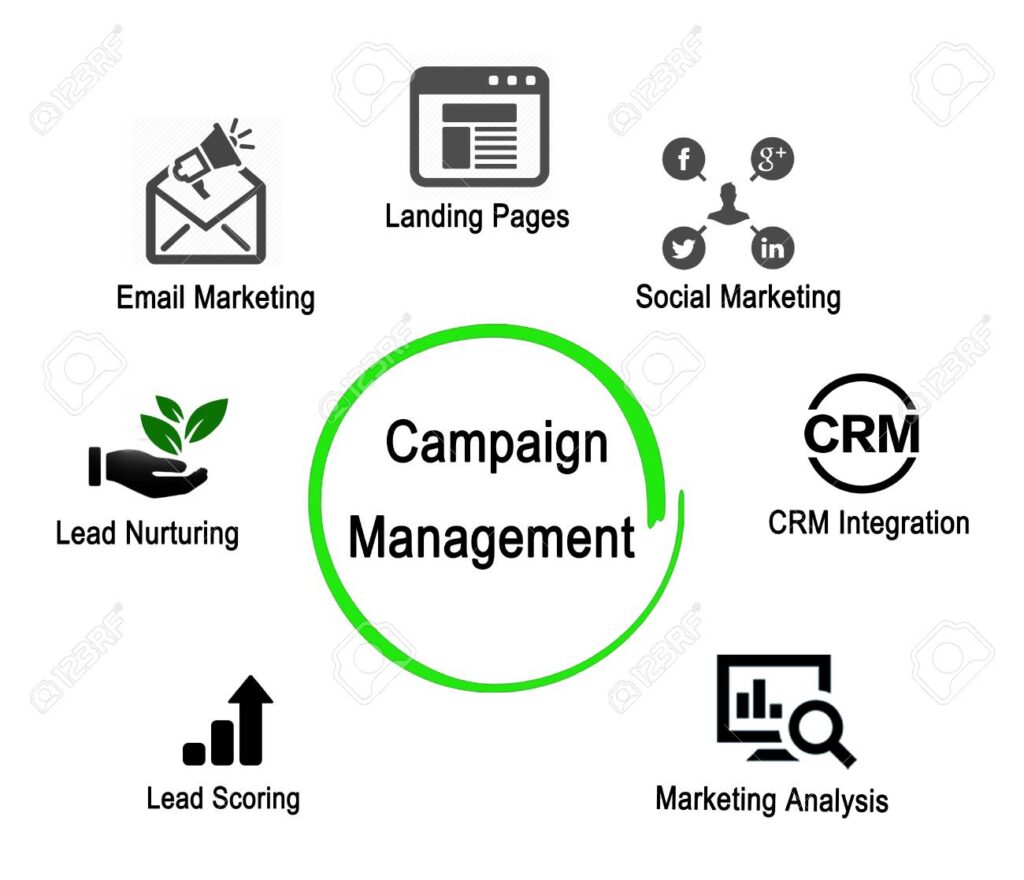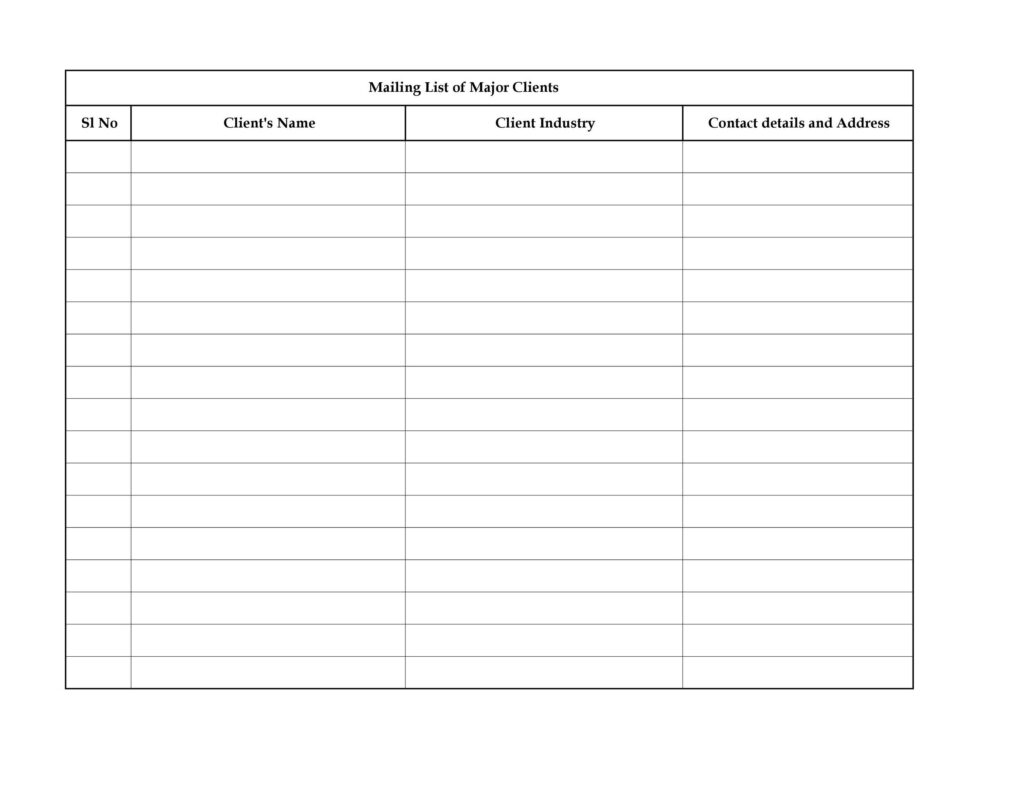Introduction
Email Campaign Management Importance of Email Marketing: In today’s digital age, email remains a powerful tool for direct communication with your audience. It allows you to nurture relationships, drive sales, and build brand loyalty effectively.
Email campaigns offer a direct line of communication to your customers, prospects, and leads. They provide a personalized touch that can nurture relationships, drive sales, and ultimately, boost ROI.

1 . Planning Your Email Campaign Management
Email Campaign Management Effective planning ensures that your email campaign is strategic, targeted, and designed to achieve specific business objectives while delivering value to your audience.
- Goal Setting: Clearly define the objectives and goals of your email campaign, such as lead generation, sales conversion, or brand awareness.
- Content Planning: Develop compelling content that resonates with each segment, including value propositions, offers, and personalized messaging.
- Call-to-Action (CTA): Craft clear and persuasive CTAs that prompt recipients to take desired actions, such as making a purchase or signing up for a webinar.
- Testing and Optimization: Conduct A/B testing on subject lines, content, CTAs, and send times to optimize open rates, click-through rates, and conversions.
2 . Building Your Email List
- Opt-in Forms: Place opt-in forms strategically on your website, blog, and social media pages to capture email addresses from interested visitors.
- Lead Magnets: Offer valuable incentives such as e-books, guides, or exclusive content in exchange for email sign-ups.
- Contests and Giveaways: Run contests or giveaways that require participants to provide their email addresses for entry.
- Social Media Integration: Use social media channels to promote your email sign-up opportunities and direct followers to your opt-in forms.
- Pop-up Forms: Employ exit-intent pop-up forms or slide-ins on your website to capture attention before visitors leave.

3 . Designing Effective Email Campaigns
- Choosing the right email template: HTML vs. plain text, responsive design considerations.
- Best practices for email design: Layout, colors, fonts, and branding.
- Incorporating compelling visuals and multimedia content.
- Writing effective subject lines and preview text to increase open rates.
4 . Automating Your Email Campaigns
- Audience Segmentation: Divide your email list into segments based on demographics, behavior, or interests.
- Triggered Emails: Set up automated emails triggered by specific actions (e.g., sign-ups, purchases, abandoned carts).
- Drip Campaigns: Create series of emails scheduled over time to nurture leads or educate customers.
- Compliance: Ensure emails comply with GDPR, CAN-SPAM, and other regulations to avoid legal issues.
- Integration: Integrate email automation with CRM systems or e-commerce platforms for seamless operations.
5 . Testing and Optimizing Your Campaigns
- A/B Testing: Compare variations of elements like subject lines, email content, CTAs, or send times to determine what resonates best with your audience.
- Segmentation Testing: Test different segments of your audience to see how different groups respond to varying content or offers.
- Performance Metrics: Analyze key metrics such as open rates, click-through rates, conversion rates, and unsubscribe rates to gauge effectiveness.
- Testing Tools: Utilize email marketing platforms that offer built-in testing capabilities or integrate with third-party tools for comprehensive analysis.
6 . Ensuring Deliverability and Compliance
- Permission-Based Lists: Only send emails to recipients who have explicitly opted in to receive them.
- Email Authentication: Use SPF, DKIM, and DMARC protocols to authenticate your emails and prevent spoofing or phishing.
- Quality Content: Ensure your emails provide value and are relevant to recipients to reduce the likelihood of being marked as spam.
- Compliance with Regulations: Adhere to legal requirements such as GDPR, CAN-SPAM Act, and CASL (Canada’s Anti-Spam Legislation) when sending emails
7 . Measuring ROI and Reporting
- Define Goals: Clearly outline specific goals for your email campaigns such as sales, leads generated, website traffic, or brand awareness.
- Tracking Metrics: Measure key performance indicators (KPIs) such as open rates, click-through rates (CTR), conversion rates, and revenue generated.
- Attribution Modeling: Use attribution models to understand how email campaigns contribute to conversions across different touchpoints.

8 . Future Trends in Email Campaign Management
- AI and Machine Learning: Use of AI for personalized content recommendations, predictive analytics, and automated campaign optimizations.
- Hyper-Personalization: More advanced personalization techniques beyond basic segmentation, using real-time data and behavioral insights.
- Interactive Emails: Incorporation of interactive elements like surveys, quizzes, and carousels to enhance engagement and user experience.
Conclusion:
In conclusion, effective email campaign management is crucial for businesses looking to engage their audience, drive conversions, and maximize ROI. By employing best practices such as audience segmentation, automation, and personalized content, marketers can create impactful campaigns that resonate with recipients. It’s also essential to ensure compliance with regulations like GDPR and CAN-SPAM to maintain trust and avoid legal issues